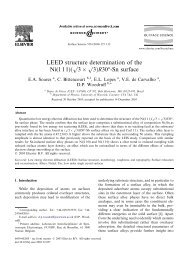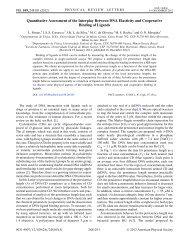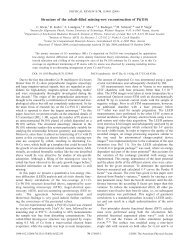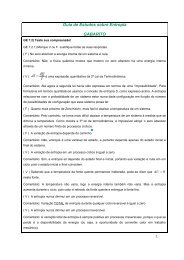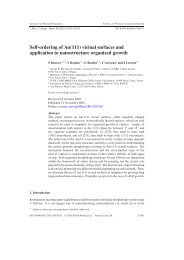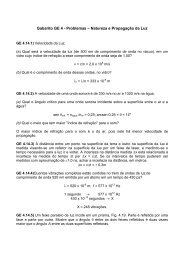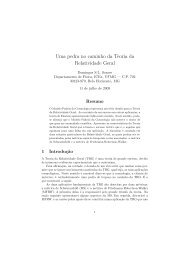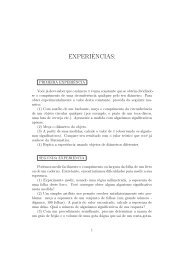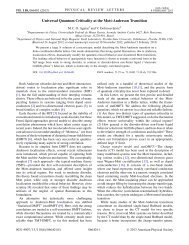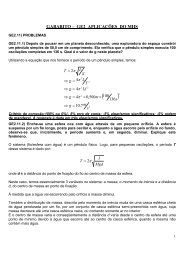Fundamental Statistical Mechanics
Fundamental Statistical Mechanics
Fundamental Statistical Mechanics
Create successful ePaper yourself
Turn your PDF publications into a flip-book with our unique Google optimized e-Paper software.
EXAMPLE: Consider the map given by<br />
φ (x) = x + α mod(1)<br />
If α is a rational number, nm where n and m are integers, then the mapping repeats the initial<br />
point after m iterations. A trajectory starting from an initial point will be periodic and will not<br />
spend equal time in regions of equal (Lebesgue) measure, and hence the trajectory is not dense<br />
on the unit interval. In this case the system is not ergodic. But if α is irrational no trajectory is<br />
periodic and the system is ergodic! To see this consider the time average of a phase function on<br />
a trajectory starting at x<br />
1<br />
B (x) = lim<br />
N →∞ N<br />
N −1<br />
∑<br />
n= 0<br />
B(φ n (x))<br />
1<br />
= lim<br />
N→∞ N<br />
N−1<br />
∑<br />
n=0<br />
B(x + nα)<br />
Consider the Fourier series for B(x): B(x) = a j e 2πijx<br />
∞<br />
∑<br />
B(x + nα) = a j e<br />
j =−∞<br />
2πijx+ 2πijnα<br />
Substituting into the time-average gives<br />
1<br />
B (x) = lim<br />
N →∞ N<br />
1<br />
= lim<br />
N →∞ N<br />
N −1<br />
∞<br />
∑ ∑<br />
n= 0 j =−∞<br />
∞<br />
∑<br />
j=−∞<br />
2π ijx+ 2πijnα<br />
a je a j e 2πijx<br />
e 2πijnα<br />
N −1<br />
∑<br />
n= 0<br />
<strong>Statistical</strong> <strong>Mechanics</strong> Page 38<br />
∞<br />
∑<br />
j =−∞<br />
1<br />
= a0 + lim<br />
N →∞ N<br />
∞<br />
∑<br />
j =−∞<br />
j ≠0<br />
a j e 2πijx<br />
1− e 2πijNα<br />
2 πijα<br />
1 − e<br />
The terms with n ≥ 1 don't survive the limit N →∞, thus B (x) = a 0 for α irrational. In this<br />
case the time average is a constant - independent of the starting point x and the system is<br />
ergodic, where the ensemble average is the average over the circle with the usual Lebesgue<br />
measure,<br />
1<br />
∫<br />
B (x) = dxB(x) = B(x) mc<br />
0



